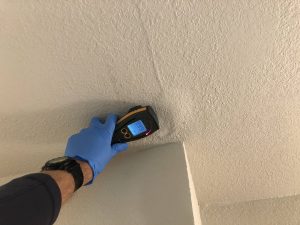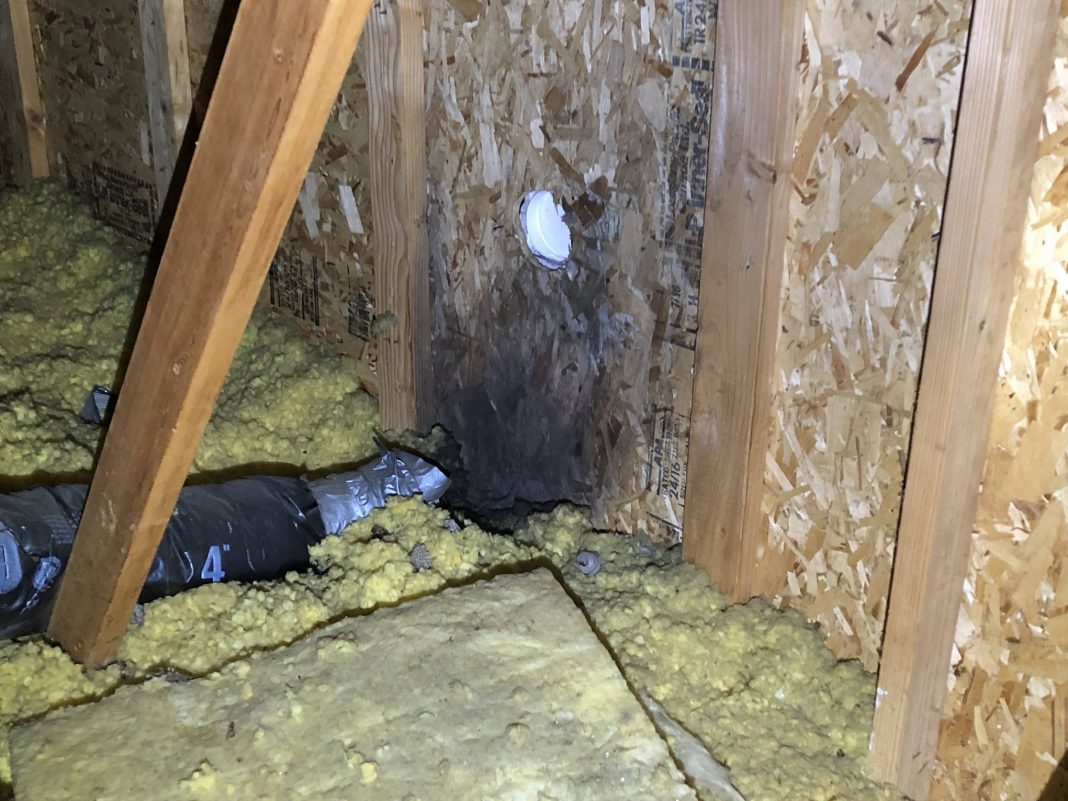If there is one thing the Pacific Northwest is known for, it’s rain. If you are a homeowner or potential home buyer, you may be concerned that the moist air and long grey winters are the perfect breeding ground in your home for mold, and you just might be right. The team at Boggs Inspection Services has seen their fair share of mold and the damage it can cause to your health and pocketbook. Boggs inspectors are licensed and InterNACHI certified to test and detect mold and its causes, and they have seen it all.

Mold growth in your home is a symptom of trapped moisture, and mold can be associated with significant health concerns for you and your family. However, not all mold is the same and the type of mold you have can be indicative of the type of problem you have. Read on to learn more about different types of molds and what to do about them.
How Does Mold Get in My Home?
Mold spores are everywhere. They can be tracked in on our shoes, hitch a ride on our clothes or our pet’s fur, or float in on a breeze through windows or an open door. Mold becomes a concern once it begins growing and spreading into active colonies. For mold to begin growing, it must have the right conditions to grow. “Mold is the symptom,” says Dwayne Boggs, CEO, and owner of Boggs Inspection Services, “Water is the problem.”
For mold colonies to grow, they must have moisture. Trapped moisture inside rooms, walls, and crawlspaces foster the perfect conditions for mold growth. Whether that moisture comes from outdoors through a leaking roof or faulty window seal, a drip from improperly sealed plumbing joints, or even the accumulated moisture from a shower in a poorly ventilated bathroom, a moist surface provides the ideal environment for mold spores to colonize your home.
Keeping Mold at Bay

As you may expect, prevention is key when it comes to mold. Keep surfaces clean with regular dusting and wipe-downs to reduce the number of mold spores that settle around your home. “Address dampness and leaks quickly,” says Dwayne. Heating damp areas can help dry them out and ensuring you have proper ventilation can move moist air out of the home.
I Think I Found Mold, Now What?
There are a few signs that could indicate mold is growing in your home. Recent water incursion is a key indicator that mold growth may have occurred. You may see visible signs of growth, which may appear as spots and splotches that are velvety, slimy, white, black, green, or pink, and that may change or spread over time. A musty odor may be present. “Construction defects, HVAC and plumbing problems, or improper venting or grading can also be indicators that you have the right conditions in your home for growth,” Dwayne explains. Additionally, human sensitivity can be an indicator of hidden mold, as mold spores and toxins can result in itchy eyes, burning sensation on the skin, changes in breathing pattern, or an increase in asthma or allergy symptoms, he adds.
Knowing what kind of mold you’ve found can tell you a bit about your mold problem. Different mold groups can be categorized as primary, secondary, or tertiary colonizers—meaning they are either the first type of mold to begin growing in an area, or a second or third, respectively. Primary molds, like Penicillium, are usually the first types of molds to begin growing. Secondary molds begin to grow when materials have been somewhat broken down and might be an indicator that previous remediation attempts were not effective. Tertiary molds typically show up after long-continued moisture intrusion or chronic high humidity. They are also an indicator that previous remediation attempts were not successful and include Stachybotrys, popularly known as “black mold.” While most molds can be unhealthy, exacerbating asthma and producing spores that irritate the respiratory systems of humans and animals, Stachybotrys produces harmful mycotoxins that can compromise indoor air quality, and cause stachybotryotoxicosis, a serious infection caused by spore inhalation, says Dwayne.
I Have a New Home. Mold Isn’t a Concern for Me, Right?

Unfortunately, new homes are not immune to mold concerns. Modern homes are much more airtight than the homes of yesteryear. That means that trapped moisture from poor ventilation or a hidden leak is much less likely to dry out. Mold can begin growing in just 24 to 48 hours.
It may be tempting to ignore the first signs of mold and hope that the problem will go away on its own. However, the consequences to your health, the health of your family, and the integrity of your home make it imperative that you take signs of mold seriously and seek out professional assistance quickly. The EPA recommends that a professional mold remediation specialist be contacted to assess and repair any area of mold that is greater than 10 square feet. However, visible signs of mold could indicate a deeper problem inside walls, subfloors, or other less accessible or less apparent locations throughout your home, so even small apparent signs could be an indication of a bigger problem and professional assistance should always be considered.
If you are seeing signs of moisture build-up or mold, or you want to ensure that these concerns haven’t gone undetected in your home or future home, give Boggs Inspection Services a call at 360.480.9602 to set up an inspection. You can also learn more about their testing process on their website.
Sponsored





















































